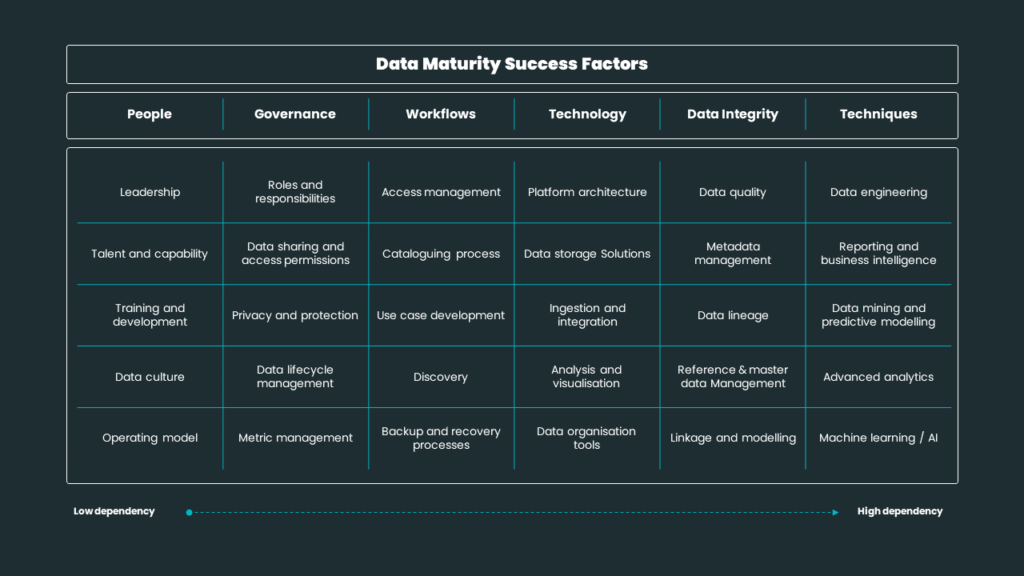
Every organisation is inherently a data organisation. Regardless of the industry or size, businesses generate, collect, and rely on data to make informed decisions, optimise operations, and drive innovation. An organisation’s data maturity reflects how effective an organisation is at achieving this.
Measuring an organisation's data maturity is crucial for several reasons. Firstly, it provides a clear assessment of the current state of data capabilities, identifying strengths and areas for improvement. This understanding enables organisations to strategically allocate resources and prioritise initiatives that enhance data management and utilisation. By benchmarking against industry standards or leading practices, organisations can set realistic and achievable goals, fostering a culture of continuous improvement.
An enterprise approach to data maturity helps in aligning data-driven strategic planning with overall business objectives. It ensures that data initiatives are not conducted in isolation but are integrated into the broader strategic framework, enhancing decision-making, operational efficiency, and innovation. Mature data practices lead to improved foundational aspects of data management, enabling more effective use of advanced analytics and artificial intelligence. This ensures your organisation remains competitive and meets customer’s demands.
Assessing your data maturity through a lens that goes beyond technology, helps build foundational capabilities that are essential for sustained growth. Doing so, ensures that data practices are scalable and adaptable, allowing organisations to seamlessly incorporate new technologies and methodologies as they evolve. By establishing these strong foundations, organisations are better equipped to leverage data as a strategic asset, driving sustained growth, and enabling more sophisticated data applications and innovations in the future.
Tried and tested models offer a reliable foundation for defining an organisation's analytics maturity. These models conduct maturity assessments across key data domains, most of which are similar in approach and application.
Established models provide a solid baseline for assessing analytics maturity, yet they often fall short due to inherent challenges, such as:
These challenges highlight the importance of adapting and evolving data maturity models to better address the dynamic nature of data practices and the critical role of people and culture in achieving data maturity.
We propose a model that incorporates the fundamental domains of leading practice with the flexibility to tailor sub-domains in accordance with industry focus, technology innovations and organisational strategic ambitions.

Our model provides a framework for assessing the critical aspects of data maturity across six primary domains:
The structure of the model seeks to account for the natural dependency between ‘Techniques’ and ‘People’ domains, helping to shape and prioritise future state design. For example, a high degree of maturity in ‘machine learning / AI’ requires organisations to have substantial maturity across most aspects of the model. Conversely, embedding strong data leadership has minimal interdependent sub-domains and may be prioritised for uplift.
Fundamentally, the domains of the model remain categorical and unchanged. This allows for the sub-domains to grow and reorder as the technology advances, ensuring that the model can scale flexibly. Our Data and Analytics Practice has applied this model across a variety of organisations and industries. For more information on how it may be applied in your organisation please contact our head of Data and Analytics.